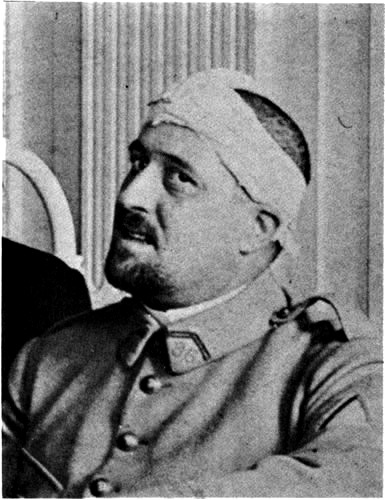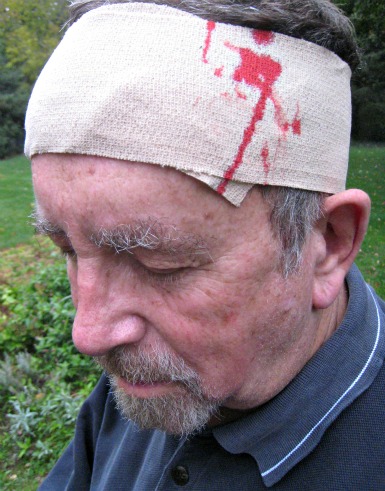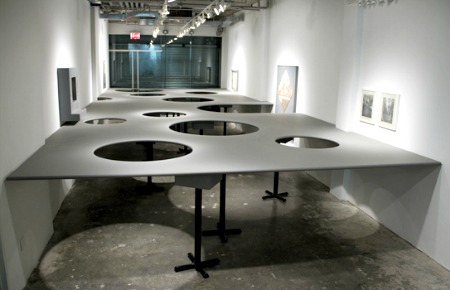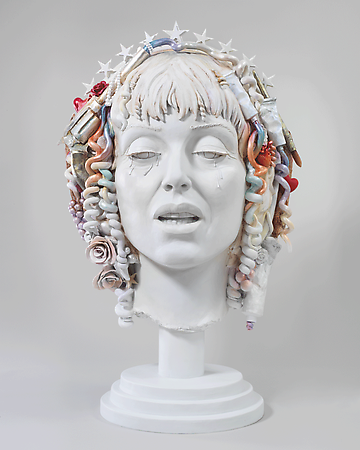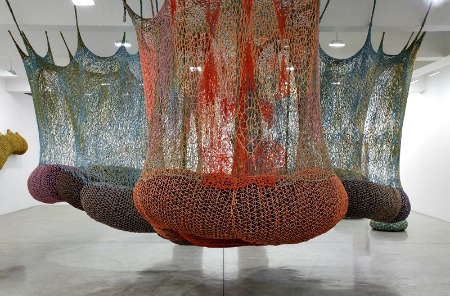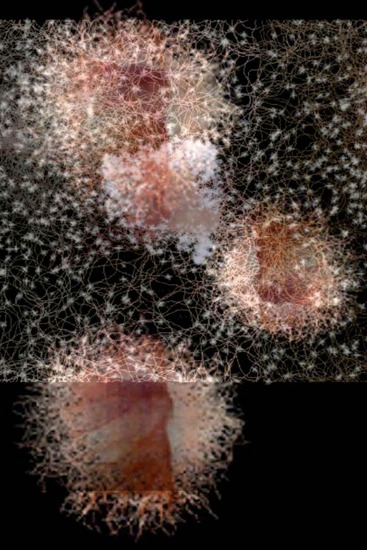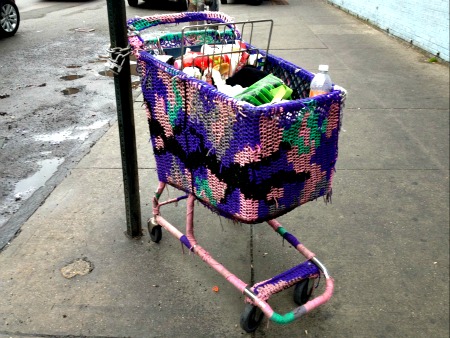1. NEVER USE THE FIRST PERSON.
In in the late ‘60s, art critic Lawrence Alloway said that, like the poet Apollinaire, I was of the peripatetic school of art criticism. When, in ancient times, I was writing for the Village Voice I walked around looking at art and made it seem part of ordinary life. He did not mean I was Aristotelian, for the same term is used for Aristotle’s (and Socrates’) ambulatory style of philosophizing .
Although I am decidedly anti-Aristotelian, I am indeed a teacher. Some mean-spirited folks might call me parenthetic rather than peripatetic, for, yes, I think of everything I write as if it is in one big parenthesis or parenthesis within a parenthesis within a parenthesis within a parenthesis. Well-knit or not, peripateticism is also the composition solution when you want to encompass a lot of art.
So I thought I would try a re-run. A little of this, a little of that. And a lot of walking around.
2. NEVER OFFER PERSONAL INFORMATION
I plan ahead. There are over 350 Chelsea art galleries. I glean my itinerary from announcements, listings, ArtNet, ArtDaily and a few other places — even taking into account the scant number of announcements I now receive by snail mail, their function largely subsumed by email. Artists still seem to want physical announcements sent, so thousands are printed. But I want to see the proof that they are all mailed out at today’s postage cost and at the throw-away rates. I remember that artist, writer and former Berlin coffee-house girl, Lil Picard handed out art announcements she had received, from two huge shopping bags, as a Street Work in 1969. Now I recycle announcements by doing instant coffee drawings on the envelopes.
Nevertheless, some believe posterity will demand a paper-trail, little cards to archive as proof that something really happened. This is a USPS conspiracy to forstall the total decimation of its services, all so 20th-century.
So how and where to start?
In one afternoon – art critics never appear anywhere before noon —- you simply cannot cover Chelsea, midtown, uptown, SoHo, Tribeca, the East Village, the Lower East Side, DUMBO, Williamsburg and now Bushwick. So obeying the new rule that you should go where the moneys is, I decided on Chelsea. I grouped the target galleries by street and planned my path.
Arrived there by taking the R uptown to the L, then the L crosstown to 8th Avenue and then, rather than switching to the uptown 8th Avenue Local, just walked the long crosstown then uptown blocks from 14th and 8th to 19th and 1oth. Too Much Information!
Getting home? Darn it. Just take a cab!
3. NEVER ADMIT YOU WERE WRONG
When the Chelsea Gallery District was just sprouting, I proclaimed it would never work. Too hard to get to. I was wrong. I now think the transportation difficulties are part of the glamour. People somehow had already managed to find their way to the Piers, full of what I call sports dungeons, so why not art venues between 10th and 11th Avenues?
And now there is the glorious High Line park. You can walk from 30th to the Meatpacking District along an old, elevated railroad track, wonderfully planted with native grasses and wildflowers. The High Line was once used for delivering meat but is now for delivering tourists. One day, I predict, it will sport a monorail. In the meantime, the design conceit is that of a river running downtown, widening as it meanders. It works. Even in winter. And you can finally see bits of the Hudson River, at least until the view is totally blocked by high-end hotels, ritzy condos, and designer showrooms.
New York City grows in weird and unexpected ways. As you know, the Whitney will be the High-Line anchor where once there was butchery of cows, pigs, and chickens; then leather bars and S&M establishments.
New York City has a mind of its own. It wants to reclaim ancient river views. It wants new places for high-end boutiques.
4. NEVER REVIEW YOUNG ARTISTS; NEVER COMPARE
My first stop was the Grayson Cox installation, “The Water’s Fine,” at the Gasser and Grunert Gallery, 531 W. 19 (closed.) I had seen an intriguing video on ArtNet, in which Cox is interviewed by artist Jon Kessler and Fia Backstrom, in situ. If you don’t have the patience for the video, then Imagine this: single-stemmed cafe tables for stand-up dining, but the displaced tabletops are perfectly round holes, everything else is a single- height platform, wall-to-wall, filling the gallery. So to see the things on the walls I had to to crawl under the platform, then pop-up through the holes near the “art” on the walls. The wallpieces are – I hope intentionally — stand-ins for art. Or art for prairie dogs. They are basically weak Richard Artschwager, which is saying a lot, since that artist’s work is weak to begin with. Or are they reinforced Neil Jenny’s?
So what I really saw was other visitors popping up through gopher holes. You could also lean against the edges of the holes and chat with whomever popped up.
5. NEVER ADMIT YOUR FAULTS
Whenever there is a grid in Manhattan the even numbers are on the south side of the street and the odd ones on the north, but there is no telling if the numbers on adjacent blocks are lined up. The length of the street and the frontage of the various buildings is what determines where the numbers end up. At least it’s better than in Tokyo where the numbers are according to the age of the building. #1 is the first built; #2, which may be five buildings away, is the second built, etc.
Since I can never quite remember how the numbers play out in Chelsea and am too lazy to Google, I always have to guess. Is it easier to go to 11th Avenue then swing around the next block or shorter to go back to 10th? It’s a meaningless throw of the dice, since you never know what new art in what new gallery you may come upon, or what awful artist or art critic you might avoid.
6. NEVER FIND FAULT. NEVER ADVISE
The day of my art search, Audrey Flack, like Cox, was near the end of her run. She was represented at one of my favorite galleries, the oldies-but-goldies Gary Snyder (529 W 20). The show consisted of her bronze statuettes, plus two gigantic, mix-media heads; one of her iconic Photo-Realist still-life paintings was visble off the playing field. Flack, by the way, is not the only woman Photo-Realist, for there is also Idelle Weber.
Flack’s edge is sharpest when she confronts kitsch head on. More power to her! She is at her best when I am forced to question myself. What am I looking at? Is Flack serious? What century are we in?
The bronze sculptures, however, have a scale problem that the paintings never had. Sofia (Vanitas), 1995, is much smaller than the announcement photo had lead me to believe. I was nonplussed. It is the best of the allegorical statuettes, but would have been great, fantastic, stupendous if it had been life-sized. A scull-headed female figure – half skeleton, half- anatomical model — dripping with jewels? And holding a crystal ball? Why not?
The gigantic, Maya-like, mixed-media Daphne, 1996, is 72” tall. But even better is Self-Portrait as St. Teresa at 68″. I want Flack to do another self-portrait head like this, but of herself as Medusa; the Medusa statuette is not scary enough. Or of herself as Eleanor Roosevelt or Wonder Woman.
7. NEVER COMPARE, DISMISS, OR REMINISCE
Douglas Heubler (1924-1997), at Paula Cooper 534 W 21 (closed), was one of the artists selected by art promoter Seth Sieglaub for his “breakthrough” conceptual art show at Leo Castelli in 1969. I always found Heubler’s early work droll. We cannot easily forget: The world is full of objects, more or less interesting; I do no wish to add anymore. “Crocodile Tears,” a collection of photo/text pieces derived from a screenplay of the same name, however, is of little interest. These wall-piece story-boards are even worse than the meaningless juxtapositions of John Baldessori. What was Heubler thinking? He should have followed his own advice.
8. NEVER REVEAL ARTISTIC ROOTS.
Ernesto Neto, at Tanya Bonakdar, 521 W. 21 to May 25 is the Brazilian known for updated participatory art, pioneered in its “tropicalia” form by Lygia Clark and Hélio Oiticica. Neto uses nets. The new installation is crocheted and, of course, if visitors remove their shoes they may crawl in and bounce around, wildly cellphone-pixing each other. Photo op alert!
Since last year, when I found myself tangled up in Gustav Metzger’s drop-cloth at the New Museum, I resist most forms of art that require me to get under or into them. But come to think of it, I have a long history of resistance to participation; I had no problem shaking hands with Lygia Clark when she first visited the U.S.A., but I resisted crawling into Oiticica’s “nest” when it was shown at MoMA as part of the Information show. I don’t know why I was seduced by Grayson Cox’s gopher holes. Maybe it is anything resembling Fiber Art that I should resist.
9. NEVER WRITE ABOUT CRAFT
Sheila Hicks, of course, is the exception. A big sampling of her work is now at Sikkema Jenkins (530 W. 22., to May 25). Most are on the small side; a mistake I think. They look like samples. With some editing, she would easily be seen as one of the great ones, which, in any case, was the Craft World consensus before that World disappeared and was transformed into Everything Art (or MAD Art). Everything Art is not art, it is everything. So why bother? Are we to compare Hicks major efforts to Robert Morris’ felt pieces or to the hanging threads and latex of Eva Hesse? Hicks’ fiber pieces can anchor an atrium or decorate an airplane cabin and that may be enough. But they are not in the least bit anxious.
10. NEVER REPUDIATE YOUR OWN OUTDATED OPINIONS.
“Gilbert & George: London Picture” at both Sonnabend at 536 West 22nd and Lehmann Maupin at 540 West 26th and in the Lower East Side at 201 Chrystie Street to June 23 is disappointing. After the voluminous show at Sonnabend, not only did I not want to visit Lehmann Maupin, I never wanted to see another Gilbert & George artwork again. These are made up of black and red headlines (shades of Barbara Kruger) lifted from London tabloids. LONDON TERROR BOMB TARGETS…..MOTHER RAPED AT TRAIN STATION. Help! Why did I ever take them seriously?
11. NEVER COMPARE PERIODS OF AN ARTIST’S WORK
Bryce Marden’s “Ru Ware Project” (2007-12) , Matthew Marks, (502 W to June 23) tries to recreate from memory the super-rare colors of 11th century Chinese Ru Ware the artist saw in Taipei in ‘07. It is splendid. But here is the problem. Seeing the RuWare panels, followed by Marden’s new oil-on-marble paintings (at 526 W. 22nd) and then walking into a back room and seeing one of his recent tangled strand paintings gives one pause. The marbles are tasty. But suddenly we are forced to realize that the tangled yarn paintings are…weak. Now they seem to owe more to Rosenquist billboard spaghetti than anything else
12. NEVER PRAISE AN ARTIST WHO HASN’T HAD AN ARTFORUM COVER.
Joseph Nechvatal’s nOise anusmOs, at Gallery Richard 514 W. 24, to May 21, is one of those exhibitions you won’t be able to forget.
What are viruses? Viruses live. Maybe. To biologists and the like, they are totally confusing. They don’t fit into the Three Domains or the Six Kingdoms. Where did they come from? They require host cells to replicate. We fear them. The HIV virus causes AIDS. 25 million dead! Although deadly, viruses are also metaphors. We dread computer viruses, but everyone hopes their YouTube clips go viral. The artist/writer/composer Nechvatal has even proposed that humans may be viruses, living off the earth.
Nechvatal, once associated with the now-historical Co-Lab and ABC No Rio venues, is the virus guy and has been for quite awhile. He has figured out how to use algorithms to act as “viruses” on images and sounds, in effect programming artworks that make themselves……Always anti-postmodernist, his new exhibition is strangely alluring. What I like more than their mode of construction is the de-stabilization they cause. The end-products of his algorithms and robotic ink machines look attractive indeed. But then: Aha! They are close-ups of anuses. I think we all have them –males and females – but they are taboo.
Nechvatal, the virus guy, risks becoming the anus guy. Good for him. He posits an anus cosmos, without even quoting Artaud. Wide awake and a bit of an activist during the denial stage of the AIDS/HIV crisis, he knew what he was doing when he began using “virus” programs on his own art to produce robot-paintings. And we always liked the mysterious surfaces of his layered “drawings.”
He is a thinker too. Visit his website for such essays as Emergence of the New Paradigm: Viractuality. Chew on this:
After a long period of temporal disjunctions following the demise of the modernist project and the excessive abuses of the post-modernist non-project; I wish to now suggest that a new clarifying paradigm has emerged based not, however, on the ideals of the raw, the pure or the reduced – but rather on the internal tic-tic-tic bomb time of the embedded and patient viral attack.
So I am suggesting here a seething project of critique within critique that re-energizes the broken gaps of temporal displacement that followed the demise of modernism and the appearance of now listless – super fragmented – irresponsible – glut of post-modern de-construction.
You can also get a taste of his Viral Symphony on YouTube.
13. NEVER PRAISE A PAINTER WHO BREAKS THE RULES.
The mystery of Ron Gorchov (Cheim and Read, 547 W.25th, closed) is why he is not more celebrated. He is what used to be called a painter’s painter. Is that the kiss of death? Maybe we do not care what serious artists think of other artists. Gorchov has respect – possibly another curse. He even has a signature look that dates far back. You can always recognize his saddle or shield-shaped canvases reliefs, minimally inscribed with flattened-windshield forms. They are wonderful to look at but impossible to figure out. That is their glory. Maybe we are looking at pre-antediluvian art or extra-terrestrial paintings. Speaking of which…..
14. NEVER REMINISCE
When I was a youth, I came into the city as much as I could. And I looked at art. My first ah-ah moment, I like to say, was listening to artist Budd Hopkins giving a gallery talk at the Whitney – which then, by the way, had free admission. In a building behind MoMA then, there was an open door between the two institutions. Hopkins “explained” Adolf Gottlieb’s Frozen Sounds, standing right in front of it. Years later I became friendly with Budd through his wife, critic and curator April Kingsley. By then he was deeply involved in the alien kidnapping conspiracy, hypnotizing people to help them remember needles stuck into their stomachs and other places by the bug-eyed demons. He played tapes that were hair-raising, but for me not as hair-raising as his short talk on Gottlieb years before — even more hair-raising than the photos of Pollock in Life magazine that I had seen when I was in high school. Yes!
So, of course, I had to take a look when I came upon the unexpected Gottlieb show at Pace at 534 W 25th street (now closed): “Adolph Gottlieb, Gravity, Suspension, Motion: Paintings 1954-1972.” Not all of the paintings are great, but they all look good, better than the Gottliebs in MoMA’s 2010 Ab-Ex show. My favorite: Four Square; a horizontal with a “sun” and two-auras on the left, and four circles on the right. You can see some others here:
Liked four Square of 1964 best….this and others can be seen HERE.
15. NEVER ATTACK OR COMPARE
And then, of course, I figured I might as well take a look at the Beverly Pepper sculptures at Marlborough, 545 W. 25th, across the street (also now closed). Four Cor-Ten exercises in curves knocked the ground-floor ceilings. Did I like them? Anything that bumps a Chelsea ceiling is bound to be impressive. But picturing the sculptures outside, turns them offensively corporate and offensively Cubist. The poet Apollinaire, who was the first to write about Cubism, would roll over in his grave. Competent work, but not transcendent. Where is my old friend Lila Katzen now that we need her? She was rolling steel way before Pepper and had the added virtue of a stock of stories about her pal Franz Kline in P-town.
16. NEVER WRITE ABOUT ART OUTSIDE THE GALLERIES
And then, off-list, I came upon a shopping cart fastened to a pole. The cart was covered with a crocheted skin of yarn. Must be Olek, I immediately thought. She has crocheted unexpected, temporary coverings for the Wall Street Bull and for Tony Rosenthal’s Alamo at Cooper Square, among other things. I did find a shopping cart on her website. Was this the same one? How did it get here in Chelsea? Polish-born Olek is the Queen of Yarn. There are guerrilla crocheting groups, it’s true. They cover bicycle racks and fences and benches. But Olek thinks big. She has a good yarn:
A loop after a loop. Hour after hour my madness becomes crochet. Life and art are inseparable. I crochet everything that enters or leaves my space. Sometimes it’s a text message, a medical report, found objects. There is the unraveling, the ephemeral part of my work that never lets me forget about the limited life of the art object and art concept. What do I intend to reveal? You have to pull the end of the yarn and unravel the story behind the crochet.
To sample John Perreault’s sand paintings you may preview online the Kauai Museum/Naropa University catalog for Mark Van Wagner and John Perreault: Drawing from Sand, with a short essay by art critic Peter Frank. Click Here. The exhibition ran from Nov. 12 to Jan. 20 in Lihue, HI. And is now at the Lincoln Gallery, Naropa University, Boulder, CO., until May 15; thence to Gallery 125, Bellport, N.Y., from June 23 to July 15.
For easy access to previous Artopia essays by topics, go to top bar, click on ABOUT, click on ARCHIVE, then scroll down to listing by Headlines.
NEVER MISS AN ARTOPIA ESSAY AGAIN! FOR AN AUTOMATIC ARTOPIA ALERT contact perreault@aol.com
John Perreault is on Facebook and now on Tumblr. You can also follow John Perreault on Twitter: johnperreault. Main John Perreault website. More of John Perreault’s art.
For Art Cops cartoons animation go to Youtube: John Perreault Channel. Click: Coffee Dance for newest animation.

